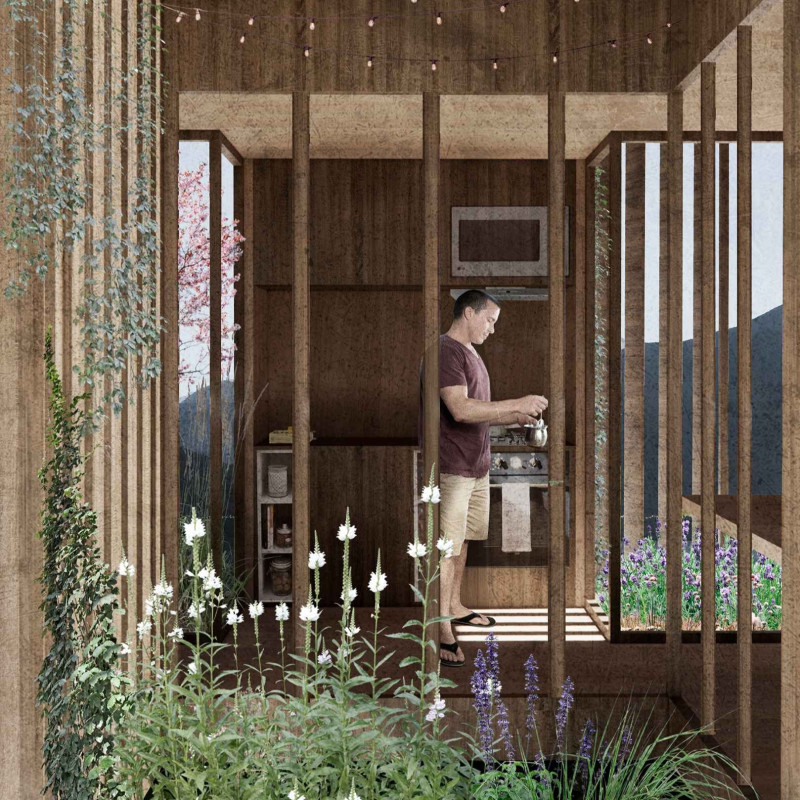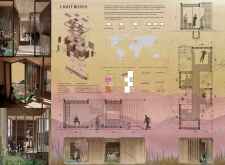5 key facts about this project
The architectural design presents a compact microhouse covering 25 m², designed to blend with its environment. Located in temperate zones, it strategically captures sunlight. The structure features light boxes that frame views of the landscape while serving as an adaptable living space. The design prioritizes practicality and sustainability, reflecting a modern approach to small-scale living.
Sustainable Design
Energy efficiency is a key aspect of the design. The flat roof is equipped with solar panels for generating renewable energy on the site. Additionally, a rainwater collection system, utilizing a tank made from mud bricks located under the microhouse, showcases an effort to conserve resources. This approach reduces reliance on external water sources and demonstrates a commitment to environmentally friendly practices.
Spatial Organization
Inside, the microhouse is thoughtfully arranged with distinct areas including a living room, bedroom, bathroom, kitchen, and workspace. The design promotes ease of movement between these spaces, enhancing overall usability. Each area serves a specific function while maintaining a sense of openness, allowing residents to navigate their daily activities comfortably and efficiently.
Material Selection
The choice of materials reinforces the project’s focus on sustainability. Local wood is used, supporting eco-friendly principles while providing warmth and texture. Additionally, the inclusion of recycled metal railings and a plastic pipeline for draining rainwater highlights a dedication to reducing environmental impact. These elements create a cohesive aesthetic throughout the microhouse.
Natural Light Integration
Jalousies incorporated into the light boxes allow for effective control of natural light and privacy. This design feature fosters a connection to the outdoors, enriching the living experience. Light filtering through the jalousies varies throughout the day, creating a dynamic atmosphere inside the microhouse. This relationship between light and space enhances the sense of comfort and well-being for the inhabitants.


















































